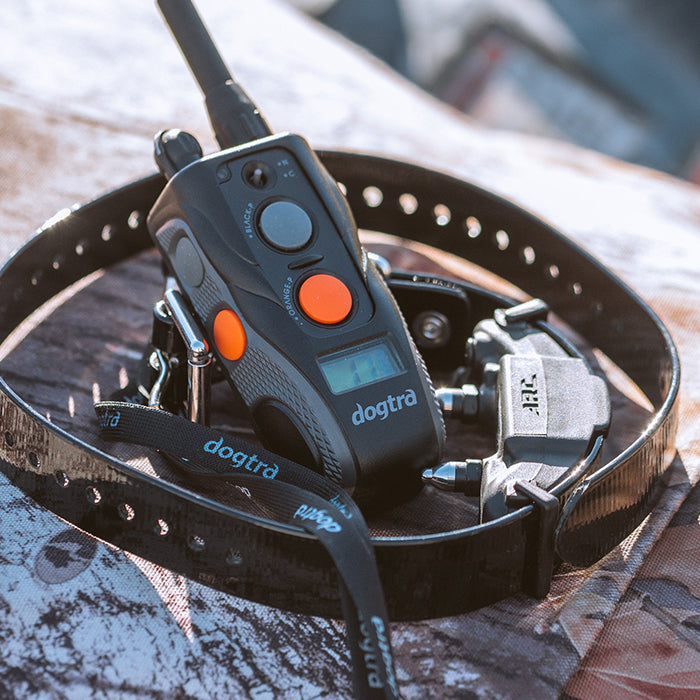3 SURPRISING BENEFITS OF E-COLLAR TRAINING

Have you thought about purchasing a remote training collar for your dog? Maybe it has even crossed your mind to get a “shock collar” as a last resort effort to solve a problem you’re having with your canine friend. Keep reading to learn more about the three key benefits of e-collar training.
It is understandable to get exasperated. Too often, the dog has been practicing naughty things like jumping up, nuisance barking, destructive chewing, and bolting out the door for a long time. As a pet owner, you love your dog, but you’re tired of the annoying behaviors, and you want them to stop!
As a professional trainer, I get it. I hear from frustrated pet owners on a daily basis. But before you go full steam ahead with the “last resort” thought process, let me explain a few things about what remote collars can actually do for you and your dog.

Benefits of E-Collar Training
Let’s toss out the “last resort, push the button out of frustration” mindset and consider how using a remote collar to communicate with your dog can actually be a fabulous way to train and build a better relationship.
1. Fast Off-Leash Reliability
First of all, training with a remote training collar is the fastest and easiest path to gaining off-leash reliability. A dog properly trained with a remote collar can safely enjoy all the freedom that running off-leash has to offer. Many people consider the remote collar to be an “invisible leash,” one that allows the dog to run at liberty but provides assurance of keeping the dog safe.
Feeling confident in your ability to call your dog to come to you not only means you can easily call him back in the house if he’s at the fence barking at the neighbor, but you can allow your dog more satisfaction when you’re out hiking, camping or at the beach. I believe e-collar-trained dogs get to go more places and do more stuff simply because their owners feel confident in their ability to have off-leash control and keep them out of harm's way.
2. Improved Communication
Electronic remote training collars can also dramatically improve the communication between you and your dog by allowing better timing.
In order to train effectively, we need to interrupt undesirable behaviors AS they are occurring. If a dog is more than a few feet from us timing becomes a challenge, and this is where a remote collar can “cross the distance” and reach out to interrupt the dog at precise moments. E-collars were first developed over 60 years ago as a way to control hunting dogs that were working at great distances from their owner. For today's pet owners, a remote collar can aid the ability to communicate across the yard or even just across the living room to interrupt nuisance behavior with perfect timing effectively. Improved timing is an advantage that makes learning faster and far more efficient.
3. Reduced Stress During Training
Last but certainly not least, when used properly, remote training collars are actually a less stressful way to train than most conventional methods.
This may be the exact opposite of what you would expect to hear, particularly if you purchased an electronic collar out of frustration with a desire to once and for all STOP a nuisance behavior your dog was exhibiting. However, if you follow some basic directions about e-collar conditioning you discover that a pressure and release system of communicating results in a compliant and HAPPY dog. That is because using a tactile cue to convey wrong from right is so black and white for a dog to understand that it simplifies the learning process. And making it easy for a dog to understand what is expected makes learning faster and less stressful.
Final Thoughts
If you have been considering purchasing a remote collar for your dog, keep thinking about it. Think about the positives that come from having an easier means of communicating that is less stressful for both of you. And start planning new adventures to take with your better-behaved dog by your side!




